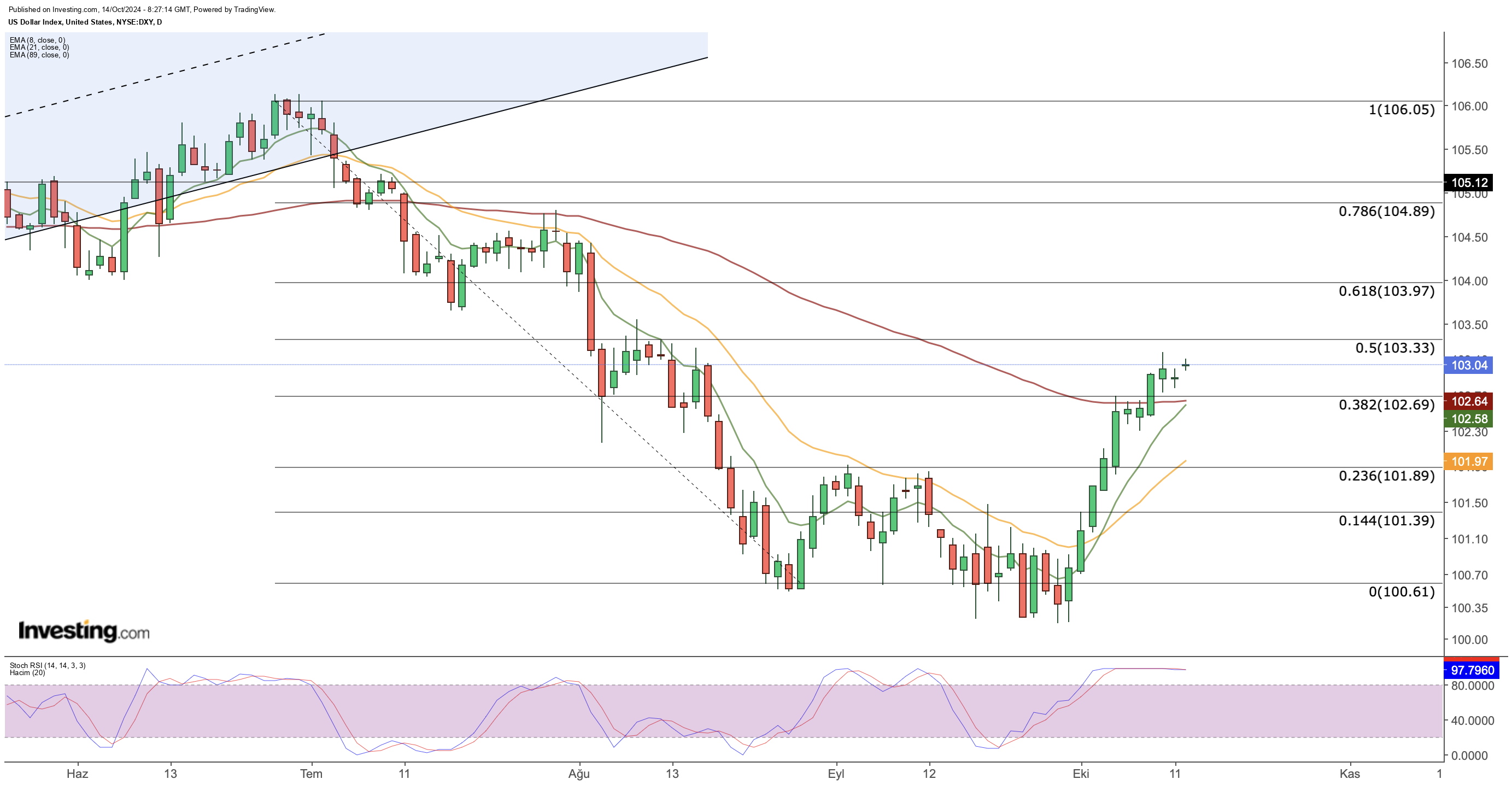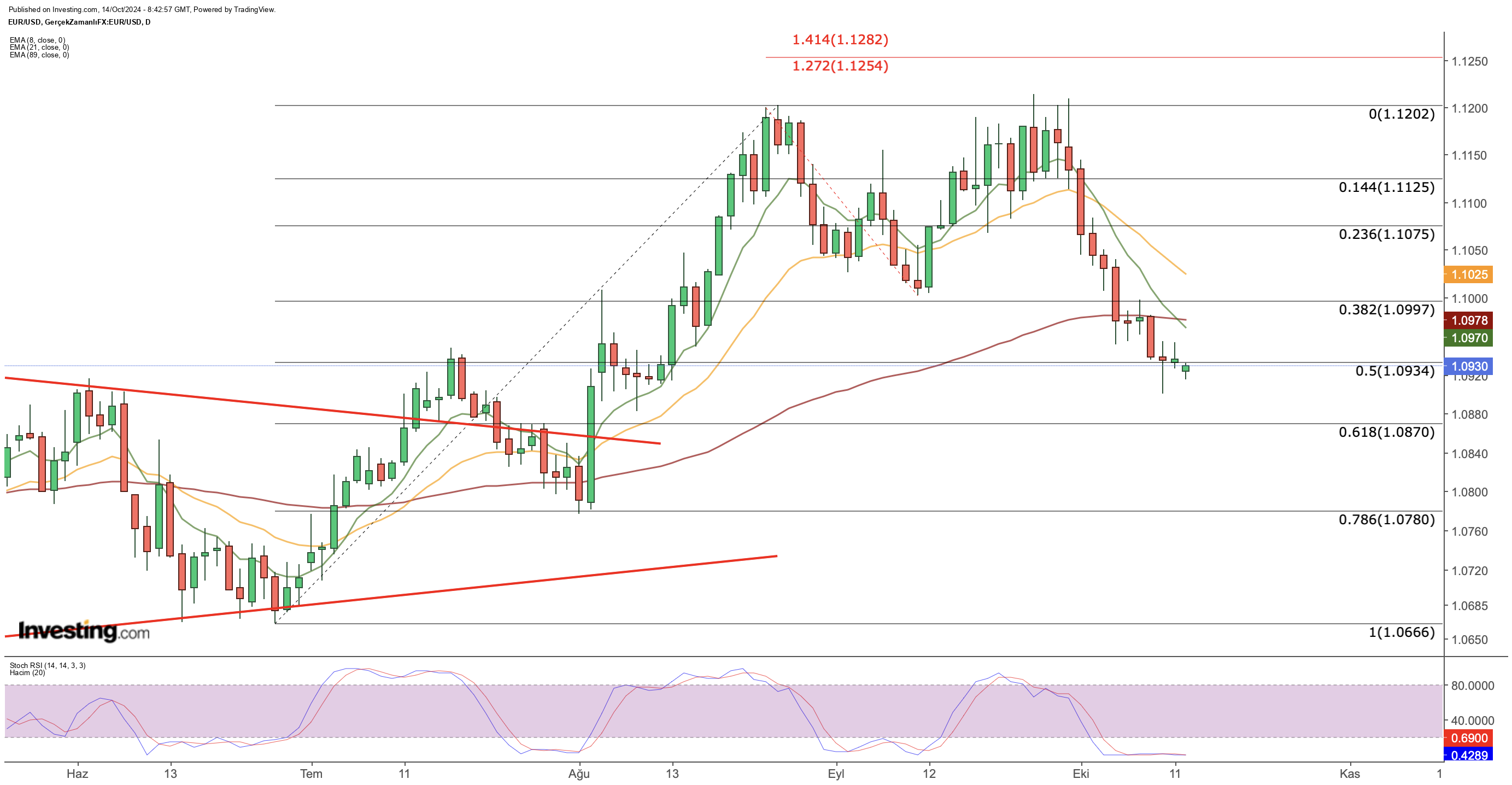- DXY is testing key resistance amid strong economic data and geopolitical tensions.
- Fed remains cautious on more rate cuts, with upcoming retail sales data possibly swaying sentiment.
- Meanwhile, EUR/USD faces downward pressure as expectations for an ECB rate cut increase.
- Looking for actionable trade ideas to navigate the current market volatility? Unlock access to InvestingPro’s AI-selected stock winners for under $9 a month!
The dollar index started the week on a strong note, continuing its resilient run from last week.
This comes amid the markets’ expectations of a more cautious approach from the Federal Reserve regarding rate cuts, with a 25 basis point reduction on the table after markets ruled out another large cut.
On top of that, the market is now putting the probability of a skip in November at 18.2%, at the time of posting this article.
Atlanta Federal Reserve Bank President Raphael Bostic recently told the Wall Street Journal that he would consider a potential November rate-cut pause.
Recent macroeconomic reports—such as employment figures, and PPI data trends - show that the U.S. economy remains on course for a soft landing.
While this week lacks significant data releases, upcoming retail sales figures and speeches from Fed officials could still influence market sentiment, especially for the greenback.
Geopolitical Tensions Keep the Greenback in Demand
Last month, as traders began factoring in the Fed's potential rate cut, there were predictions that the dollar index (DXY) could experience further declines after a prolonged weakening since June.
However, the stronger-than-expected U.S. economic indicators, coupled with rising geopolitical tensions, are bolstering demand for the dollar.
Tensions in the Middle East continue to drive interest in safe-haven assets, and the DXY is now testing the critical 103 level.
US Dollar Index: Key Support and Resistance Levels
As of October, the DXY appears to have reversed its trajectory, successfully converting last week's critical resistance level into support.

During last week's recovery, the index broke above the 102.6 level—aligning with the Fibonacci 0.382 retracement—along with the three-month exponential moving average (EMA). This breakout has established a new resistance level near 103.3.
This week, we could see the 102.7 level serve as a crucial support point while aiming for a sustained move above 103.30.
Should the index break out above this resistance, the 104 level could come into play. Conversely, if the DXY closes below 102.70, we may witness a corrective move toward the 101.90 level.
EUR/USD Under Pressure Amid Dovish ECB
The EUR/USD pair faces continued downward pressure as the strong dollar and weak Eurozone economy collide.

A consensus is building around the ECB implementing a rate cut this week, which, combined with falling yields in the Eurozone, bolsters demand for the dollar.
Traders increasingly expect the Fed to proceed cautiously, further pressuring the EUR/USD pair. With markets anticipating multiple rate cuts from the ECB before year-end, the Euro's decline against the dollar seems likely to persist.
In summary, strong economic indicators from the U.S. are slowing Fed rate cut expectations while supporting the dollar. Meanwhile, the Eurozone grapples with economic headwinds as the ECB prepares to ease rates.
From a technical perspective, the EUR/USD pair broke below the critical support just shy of the 1.10 level last week and continued its decline.
The new week starts below the secondary support level of 1.0934. If a clear daily candle forms below this threshold, the pair could further decline toward the 1.0870 level.
Additionally, the daily chart indicates a double top formation at the 1.12 level over the past three months. Given this pattern, a decline following the breach of the 1.099 line could materialize, potentially driving the pair toward the 1.078 level.
***
Disclaimer: This article is written for informational purposes only; it does not constitute a solicitation, offer, advice, counsel or recommendation to invest as such it is not intended to incentivize the purchase of assets in any way. I would like to remind you that any type of asset, is evaluated from multiple perspectives and is highly risky and therefore, any investment decision and the associated risk remains with the investor.
